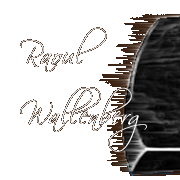|
Raoul Wallenberg
Detailed picture subtitles
1. Street named after him in XIIIth district, Budapest, where he saved tens of thousands of people. The bronz relief is work of Gerő Gábor Bottos, unveiled in 1989. The year on it shows the date of his birth (1912) but not the year of his death. Many assume that 1947, according to the official Soviet report about the year of his death in prison, is in fact fiction and Wallenberg could have still been alive somewhere for a long time. The inscription in Hungarian: To the memory of Raoul Wallenberg - secretary of the Swedish Embassy who saved tens of thousands of riddens with his brave acts and deeds during the Arrow-Cross regime.
2. The original of this memorial made by Pál Pátzay was erected from public donation on the initiative of the Wallenberg Foundation in 1945. The communist dictatorship demolished it in 1949. The re-erection took place 50 years later from donations, on the initiative of the Wallenberg Statue Comittee '98.
3. Relief of Wallenberg and inscription in Hungarian: Raoul Wallenberg - The Deputy of the Swedish Nation. From the beginning of July 1944 until January 1945 he coordinated the brave and noble humanitarian activity of the Royal Swedish Embassy in Budapest. He became a legendary heroe in that dark period of destruction. May this monument announce our imperishable gratitude in the middle of the city which riddens were protected by his persistent humanity in an inhumane era's night.
4. Killing the snake - the monument got this politically neutral title after its demolishion, when the sculptor Pál Pátzay had remade it and participated with it in exhibitions. The Wallenberg relief had not yet been put back on it.
5. -
6. -
7. Names of those who contributed to the re-erection of the memorial, on black marble tablets next to the pedestal.
8. Statue of Wallenberg in Buda, IInd district, Szilágyi Erzsébet fasor - a street with high traffic but way out from the city center. The sculptor Imre Varga had been commissioned to make the monument as a replacement for the one demolished in 1949, that used to stand on the Pest side (picture 2).
9. Inscription in Hungarian: This memorial was erected by the Wallenberg family, Nicolas M. Salgó the ambassador of the USA in Hungary. Budapest City Council 1987.
10. Raoul Wallenberg standing between two red marble blocks.
11. Closer view of Wallenberg's statue.
12. On the back of the marble stones the imprint of the 'Killing the snake' statue can be seen, that had been destroyed in 1949 and re-erected in 1999.
13. The latin inscription: Donec eris felix multos numerabis amicos tempora si fuerint nubila solus eris - Until you are lucky, many friends you have, once the sky turns cloudy, alone you remain.
Raoul Wallenberg
Article from Lonely Planet: Budapest City Guide
Of all the 'righteous gentiles' honoured by Jews around the world, the most revered is Raoul Wallenberg, the Swedish diplomat and businessman who rescued as many as 60,000 Hungarian Jews during WWII.
Wallenberg, who came from a long line of bankers and diplomats, began working in 1936 for a trading firm whose president was a Hungarian Jew. In July 1944 the Swedish Foreign Ministry, at the request of Jewish and refugee organisations in the USA, sent the 32-year-old Wallenberg on a rescue mission to Budapest as an attaché to the embassy there. By that time, almost half a million Jews in Hungary had been sent to Nazi death camps.
Wallenberg immediately began issuing Swedish safe-conduct passes (called Wallenberg passports) from the former Swedish embassy on Gellért Hill, which bears a plaque attesting to the heroism of Wallenberg and the less well-known diplomats Carl-Ivan Danielsson (1880-1963) and Per Anger (1913-2002). He also set up a series of safe houses flying the flag of Sweden and other neutral countries where Jews could seek asylum. He even followed German death marchers and deportation trains, distributing food and clothing and actually pulling some 500 people off the cars along the way.
When the Soviet army entered Budapest in January 1945, Wallenberg went to report to the authorities but in the wartime confusion was arrested for espionage and sent to Moscow. In the early 1950s, responding to reports that Wallenberg had been seen alive in a labour camp, the Soviet Union announced that he had in fact died of a heart attack in 1947. Several reports over the next two decades suggested Wallenberg was still alive, but none was ever confirmed. Many believe Wallenberg was executed by the Soviets, who suspected him of spying for the USA.
Around the world guide to Raoul Wallenberg
Biography of Raoul Wallenberg
Chronology
Károly Szabó, a help of Wallenberg in Budapest
Memorials, monuments, plaques dedicated to his memory in Hungary.
Other rescuers from A Teachers Guide to the Holocaust
Raoul Wallenberg Association and Foundation in Hungary
Raoul Wallenberg Committee of the United States
top
|


